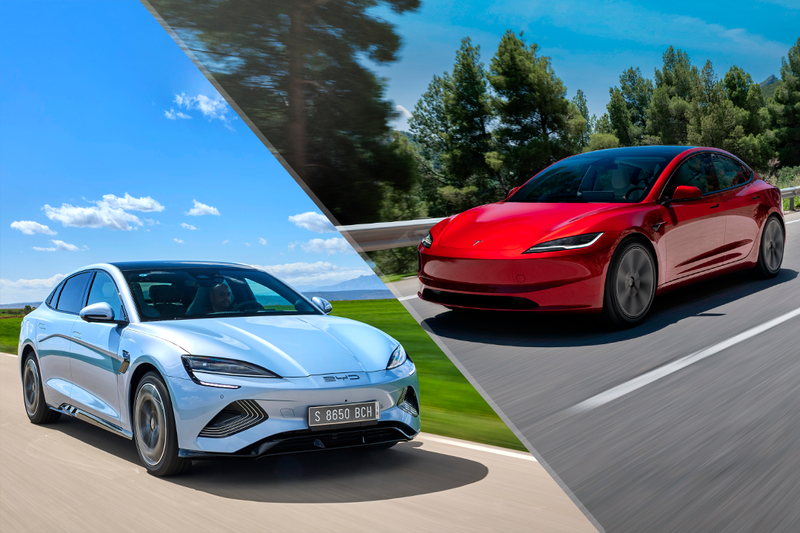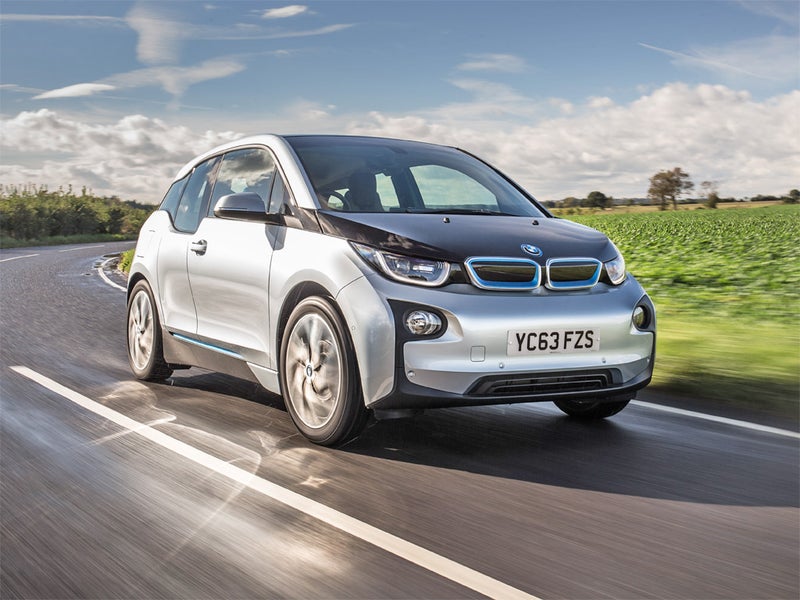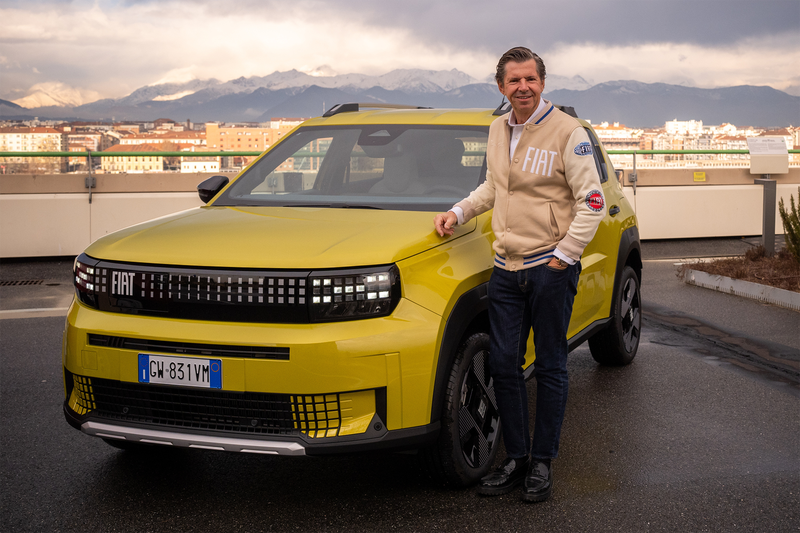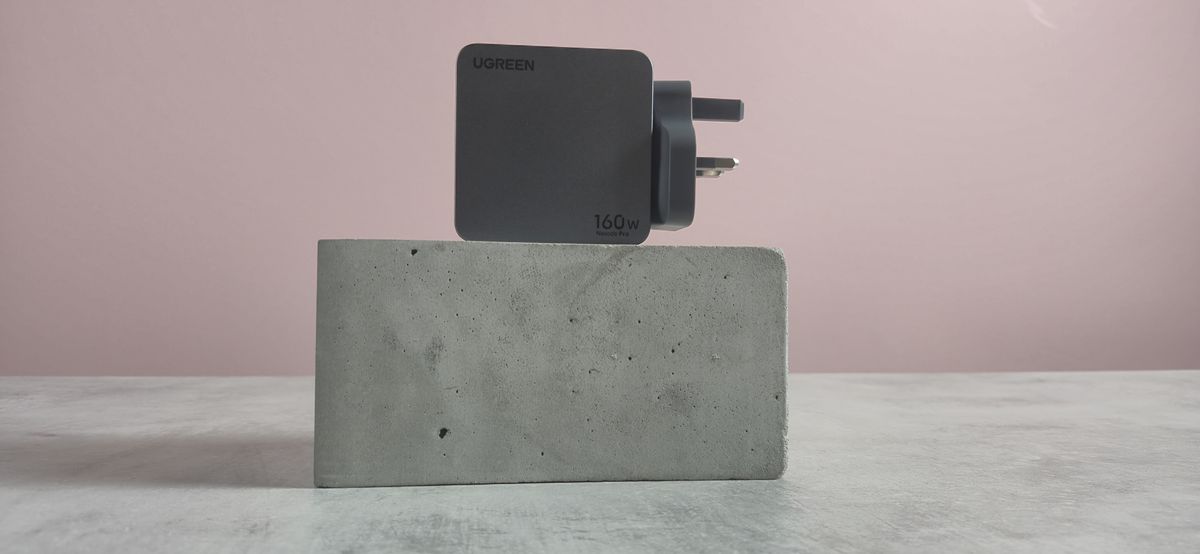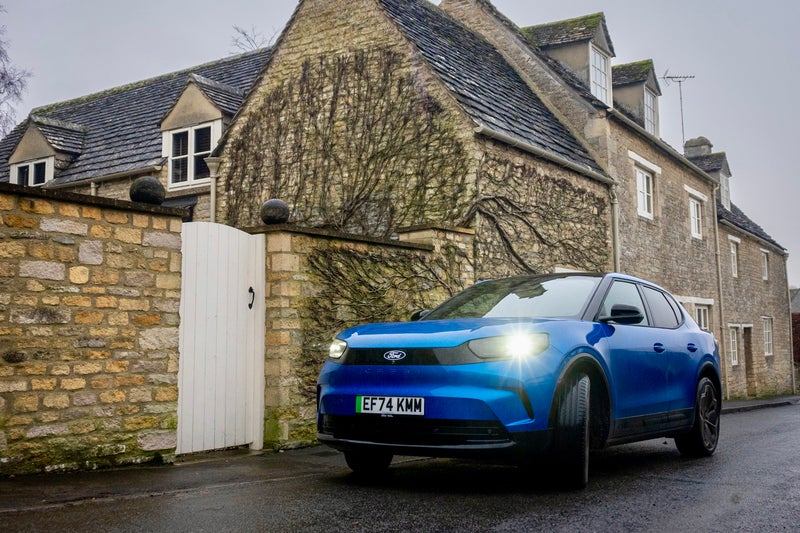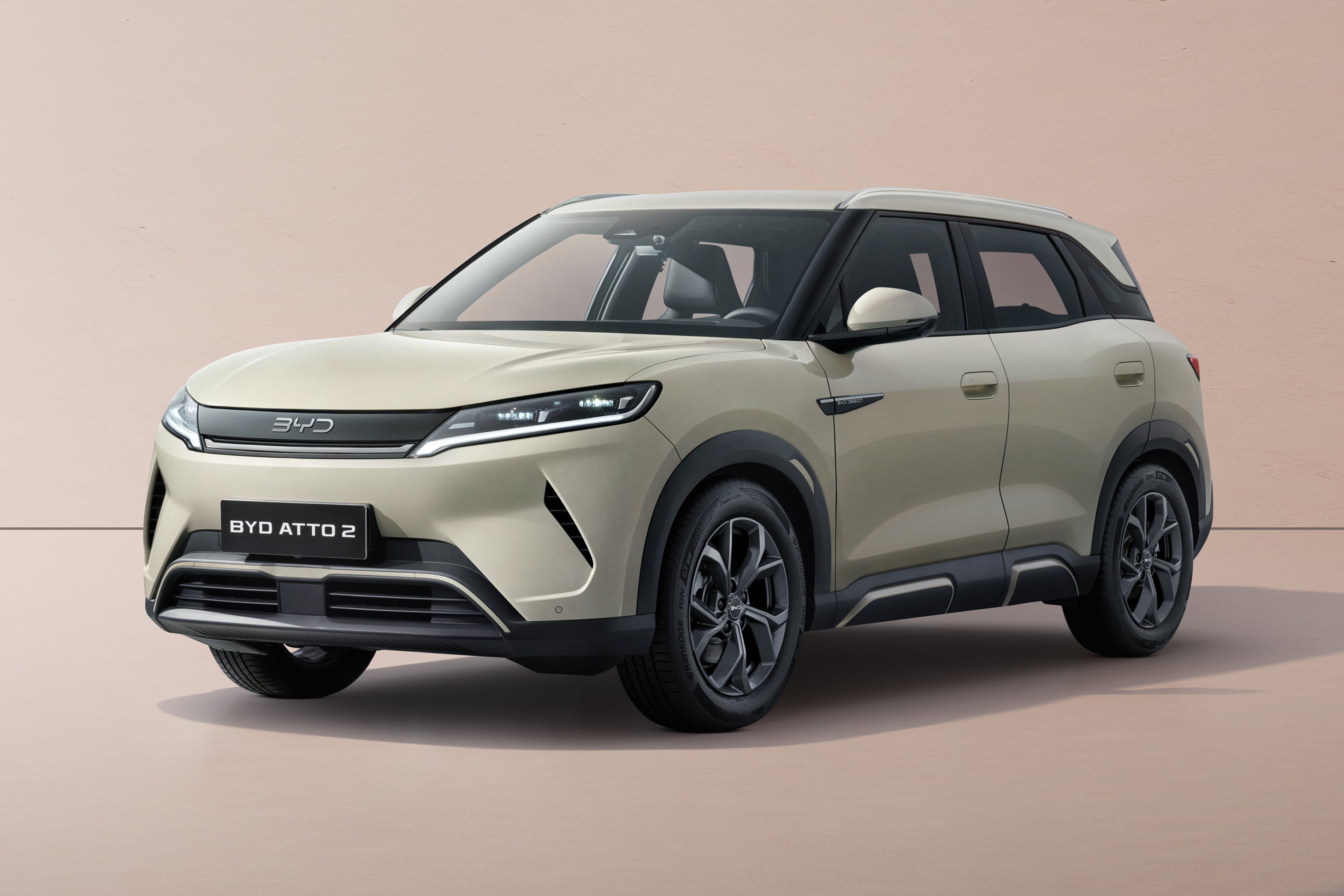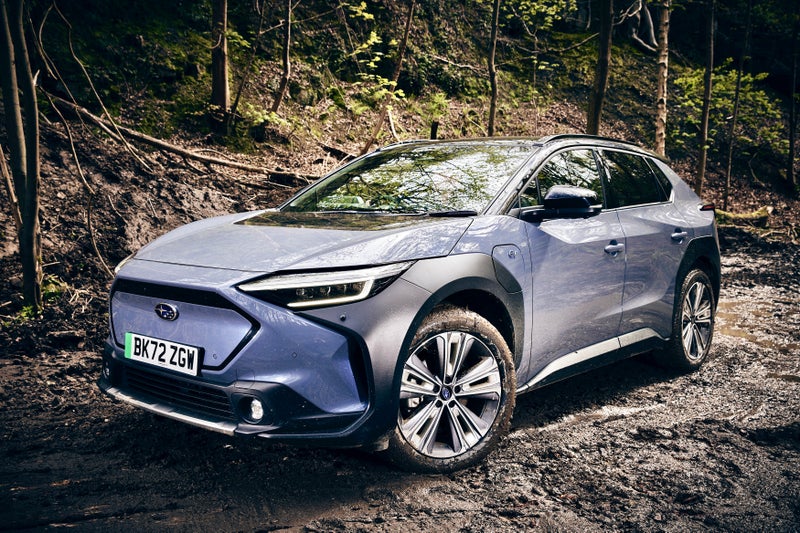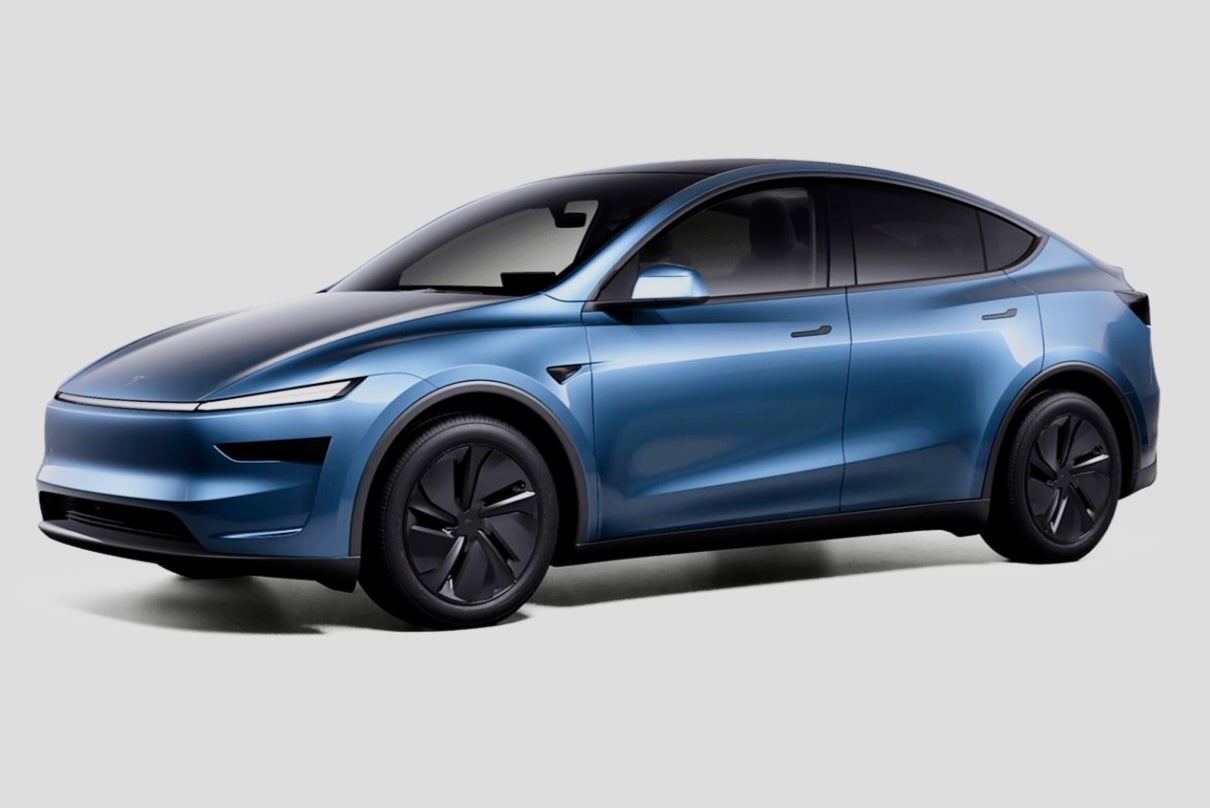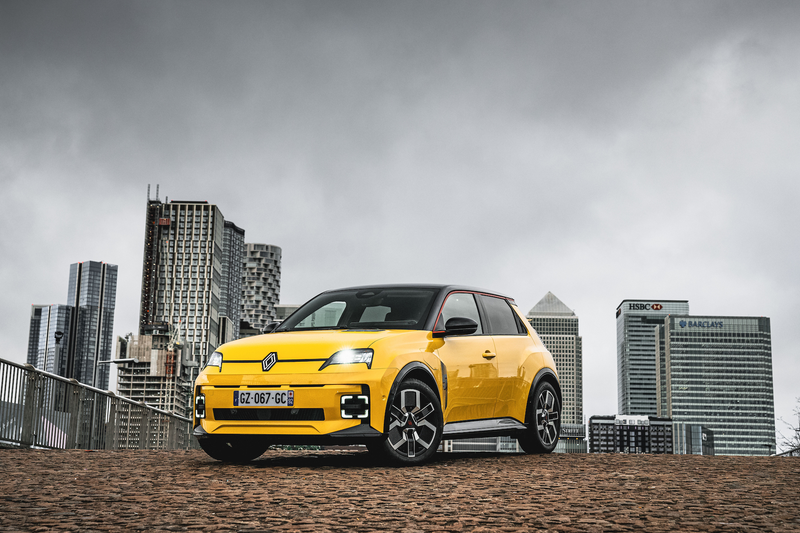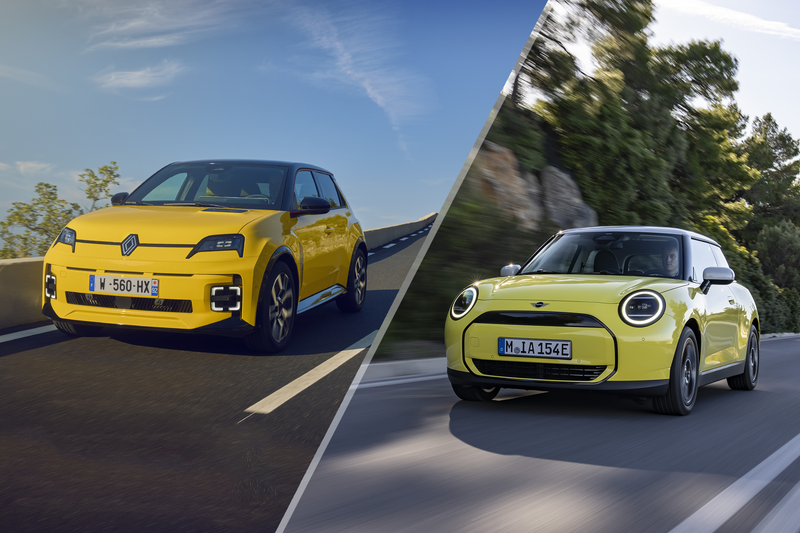Tesla Model 3 vs BYD Seal: Which electric family car is best?
Tesla Model 3 vs BYD Seal: Which electric family car is best?
Share:
Here’s how the Tesla Model 3 stacks up again its latest electric rival, the BYD Seal. Texsla might be the world’s best-known electric car company, but it isn’t quite the biggest – that title goes to Chinese carmaker BYD. Although only landing in the UK market in 2024, BYD has been in business since 1995 and its automotive division has been producing vehicles since 2002. It battled with Tesla throughout 2024 for the title of world's biggest EV maker, and currently sells four different models in the UK.
![[The Tesla Model 3 is priced from £39,990]](https://static.independent.co.uk/2024/08/19/17/Model3_47-1.jpg)
Here we are comparing the Tesla Model 3 with the BYD Seal. The former needs little instruction, although it underwent a significant facelift in 2024 to usher in new styling, a revised interior and improvements to both performance and efficiency. In the other corner we have the BYD Seal, which is a similarly sized and similarly priced electric saloon car. It’s almost as quick as the Model 3, charges just as rapidly, and has a more conventional interior, but offers a little less range. Which is best? Read on to find out.
![[The BYD Seal is priced from £45,695]](https://static.independent.co.uk/2024/12/20/15/BYD_Seal_OR_AG_19.jpg)
We have driven both cars on a variety of roads in the UK, and in the case of the Tesla Model 3 we have also used a second-hand vehicle as our own for several months. When driving both cars we paid close attention to their design, performance, range, comfort, practicality and technology. Independent rating: 10/10. Independent rating: 7/10. There are four distinct variants of Model 3, but just two of the BYD Seal. The Tesla starts at £39,990 for the entry-level car, simply called Rear-Wheel Drive, owing to its single motor drivetrain. Above this sits the Long Range Rear-Wheel Drive, which is priced from £44,990 and also has a single motor, but is fitted with a larger battery that increases range from 318 to 436 miles.
![[Updated in 2024, the Model 3's build quality has improved markedly]](https://static.independent.co.uk/2025/01/30/15/47/Model3_57.jpg)
Next is the Long Range All-Wheel Drive, which is priced from £49,990 and has two motors instead of one. It has slightly less range than the previous car, but is quicker to 60 mph (4.2 seconds vs 4.9, or 5.8 for the base model). Finally, the most expensive Model 3 is the Performance All-Wheel Drive, which costs £59,990 and cuts the 0-60 mph time to just 2.9 seconds. Range also falls, to 328 miles.
![[At 453 litres, the BYD Seal has slightly more storage than the Tesla.]](https://static.independent.co.uk/2025/01/30/15/04/BYD-Seal.jpeg)
The BYD Seal offering is simpler, with just the £45,695 Seal Design and the £48,695 Seal Excellent AWD to pick from. Both have the same battery but the cheaper model has a single motor driving the rear wheels, while the pricier car has two motors and all-wheel-drive. Both cars have a claimed range of over 350 miles – and in the case of the Model 3, over 430 miles when you go for the bigger battery, single-motor variant. As ever with electric cars, your mileage will vary, and maximum range is affected by speed, driving style and ambient temperature, among other variables.
![[The Tesla Model 3's interior has a dashboard display and...nothing else.]](https://static.independent.co.uk/2025/01/30/15/59/Model3-83.jpg)
The two cars also fill their batteries at a similar speed, although at 170 kW the Tesla’s maximum charge rate is slightly better than the 150 kW of the BYD. Tesla says the battery can take on up to 172 miles of range in 15 minutes, while BYD says the Seal’s battery charges from 10 to 80 per cent in as little as 37 minutes. Tesla cars have always been known for their rapid acceleration, and while this is also true of the Model 3, the BYD Seal isn’t too far behind. The base-level Seal has a 0-62 mph time of 5.9 seconds, and the more powerful dual-motor version cuts that time to just 3.8 seconds – a number BYD is so proud of, it appears as a badge on the back of the car.
![[The interior of the BYD Seal features a rotating 15.4-inch touchscreen display.]](https://static.independent.co.uk/2025/01/30/15/37/BYD_Seal_Int_AG_1.jpg)
By comparison, the entry-level Model 3 completes the standard sprint in 5.8 seconds – a tenth quicker than the base BYD Seal. But take the quicker version of the Seal, which costs £48,695, and compare it to the £49,990 Model 3 Long Range All-Wheel-Drive, and it’s the BYD that is quicker, by 0.4 seconds. The 2.9-second 0-60 mph time of the Model 3 Performance is, plainly, in an entirely different league of performance.
The current Tesla Model 3 arrived in 2024 and included a host of upgrades over its predecessor. It rides better, is more comfortable, and feels better made than earlier examples of Model 3. It’s also quicker than ever, while boasting greater refinement than the first-generation Model 3, which launched back in 2017. The BYD Seal also offers decent refinement and comfort, although we recommend going for the less powerful of the two options. It might sound fun to go for the quick one, especially when it’s only slightly more expensive, but there’s little else to mark this out as a sports saloon, and it isn’t going to trouble similarly quick options from Germany any time soon.
The Seal is a comfortable and softly sprung car, so doesn’t really benefit from extra power. We’re not sure we would quite call it luxurious, but it gets the basics right and as long as you don’t ask too much from the chassis, it performs well. The Tesla wins this category, but only just. It feels more composed than the BYD – a clear indication that this is a second-generation car with maturity and extra development time on its side.
